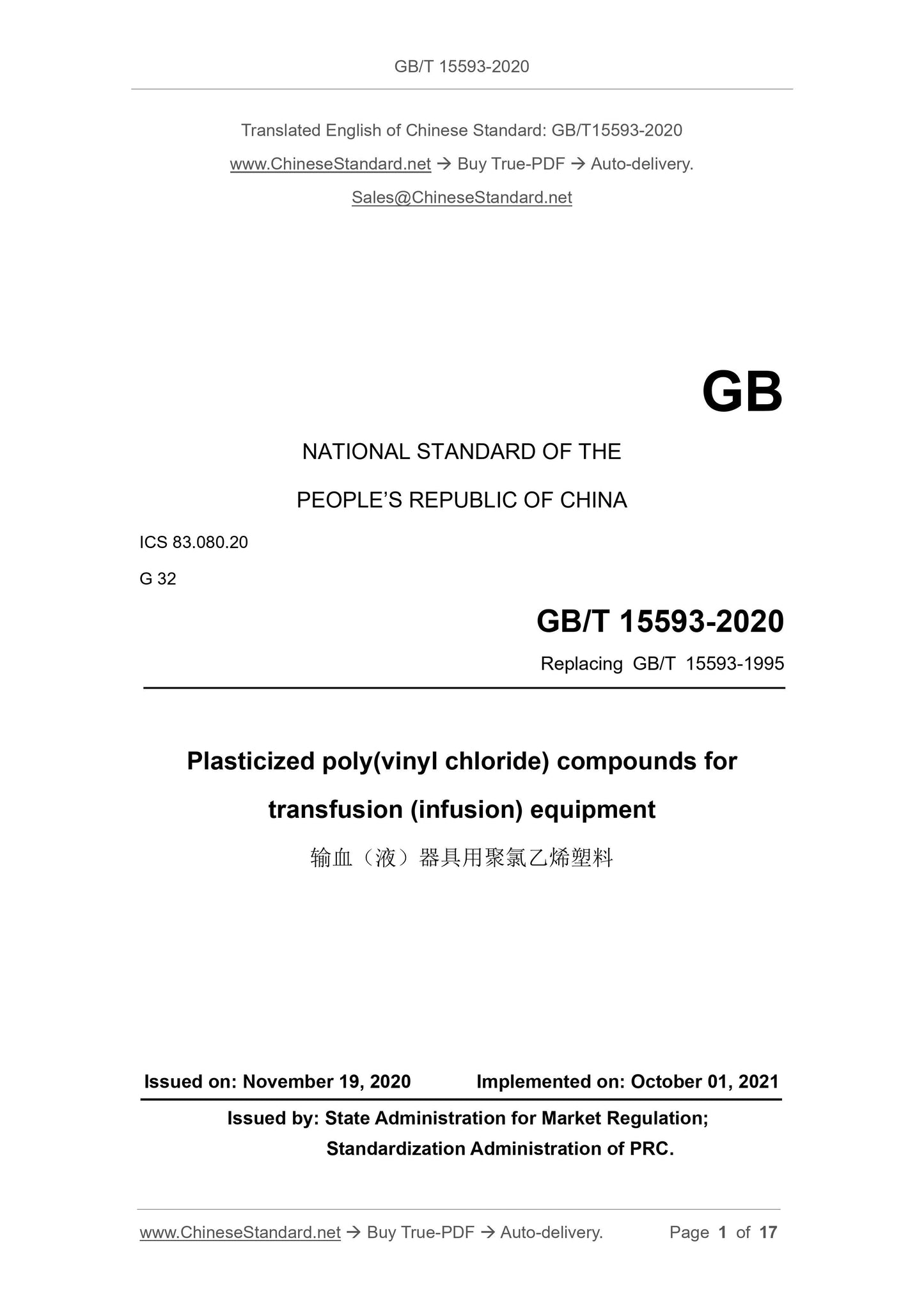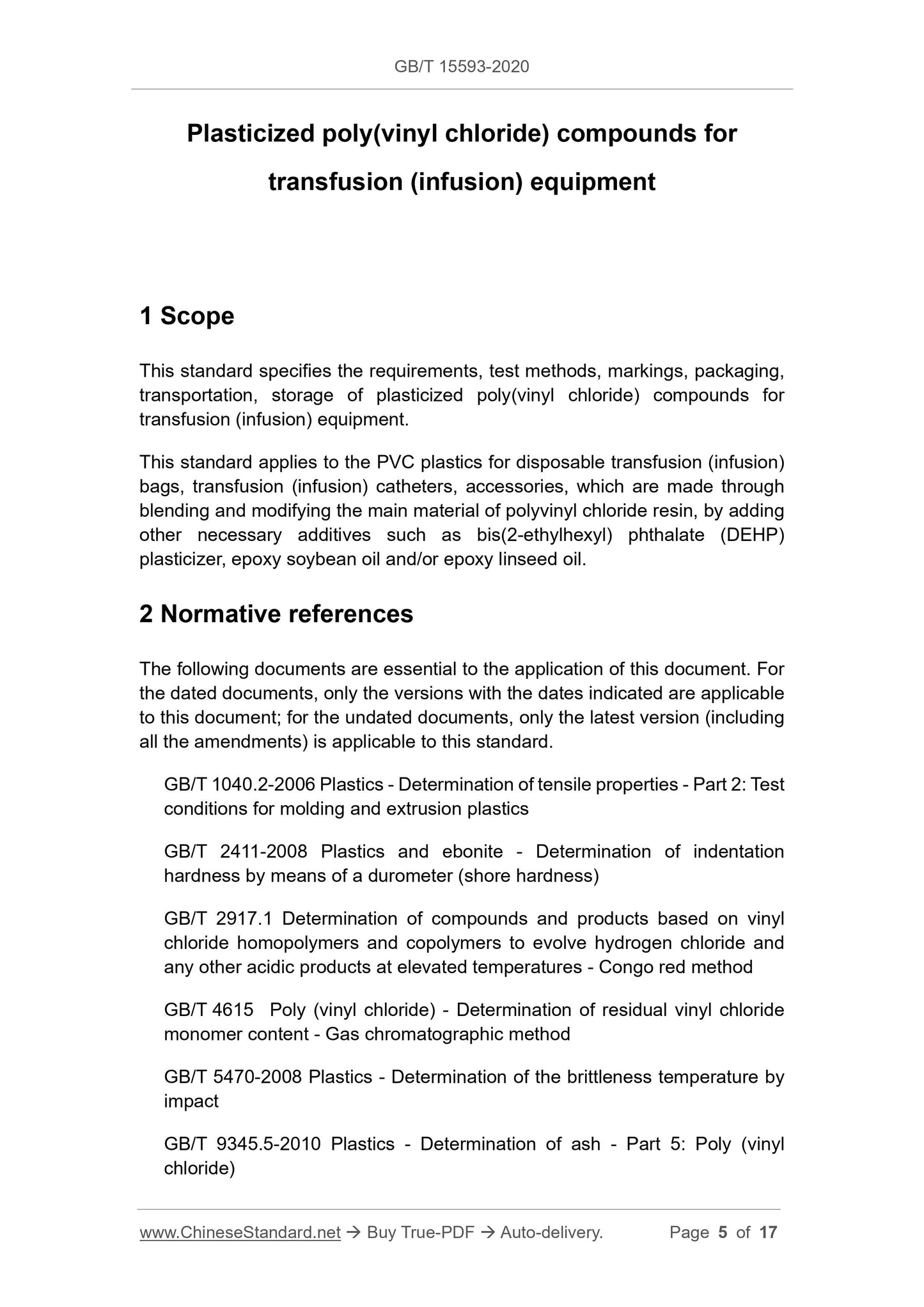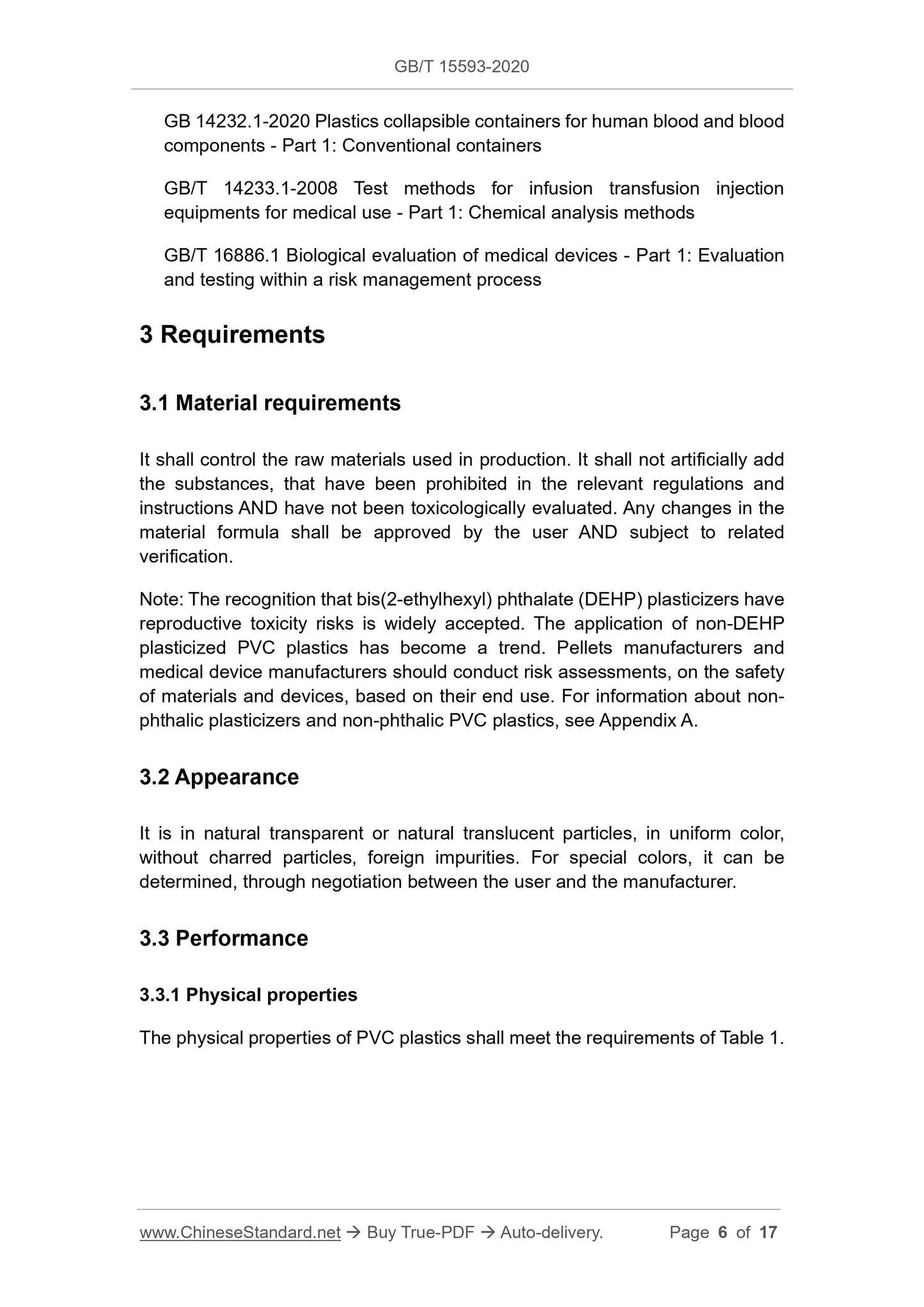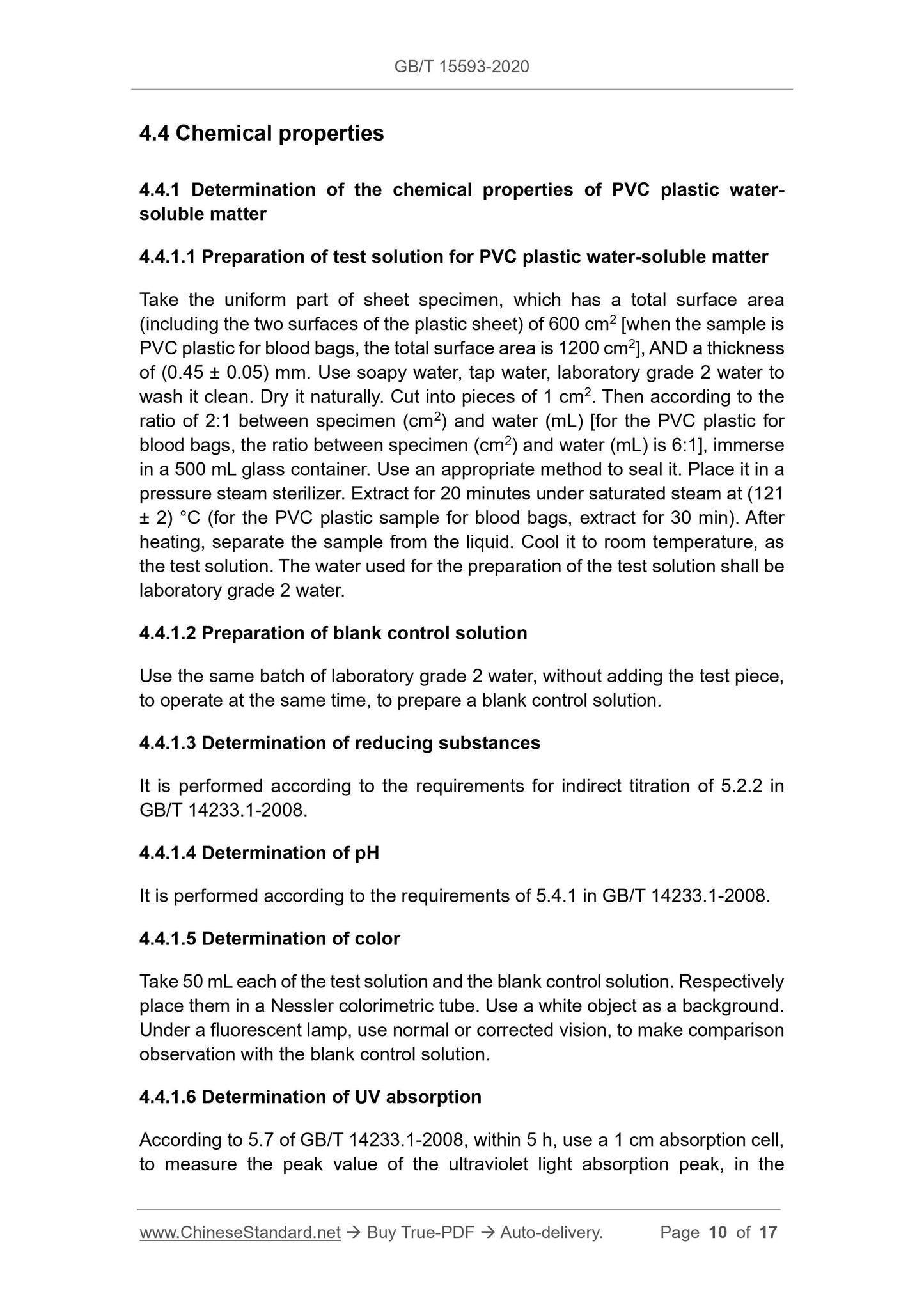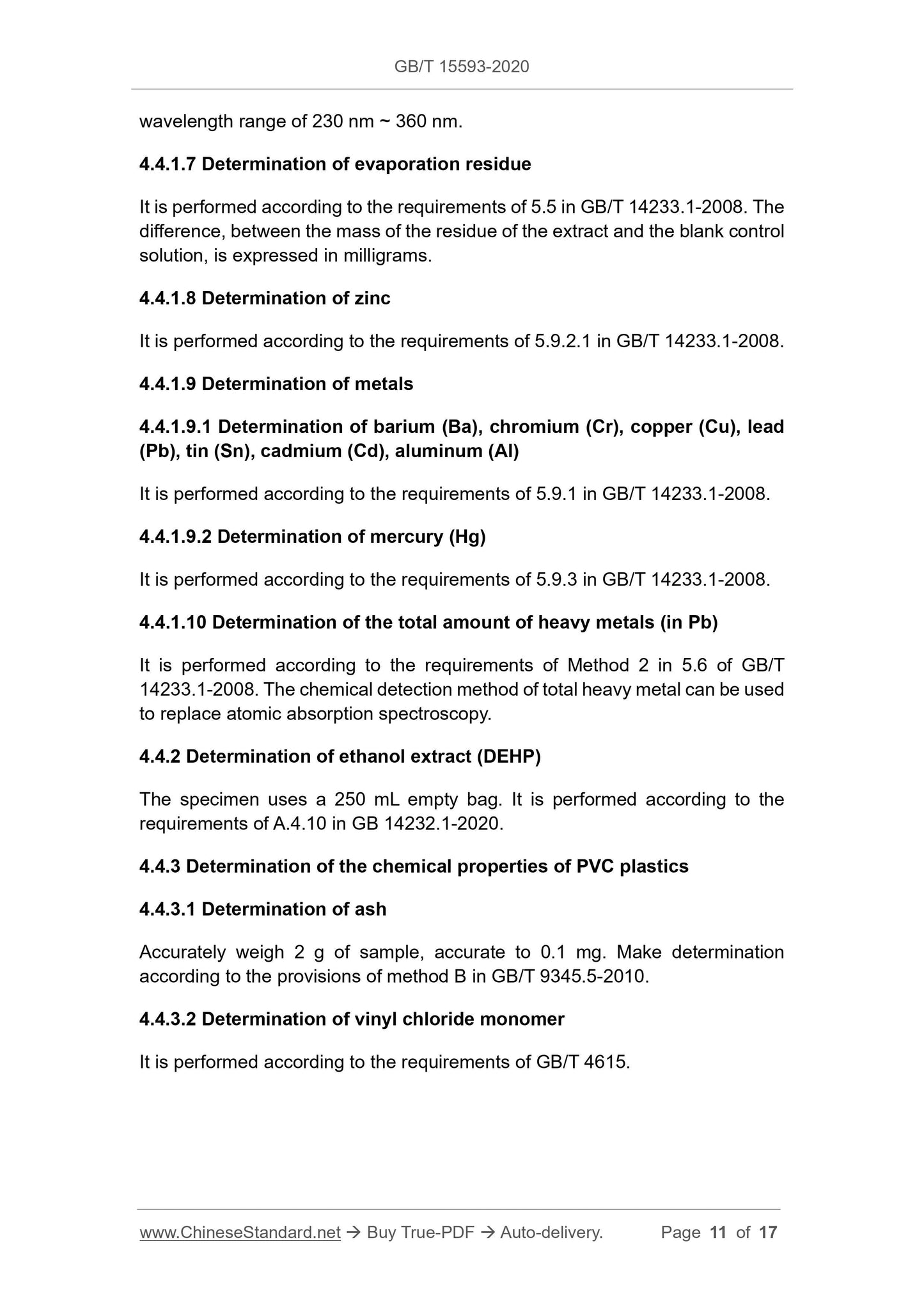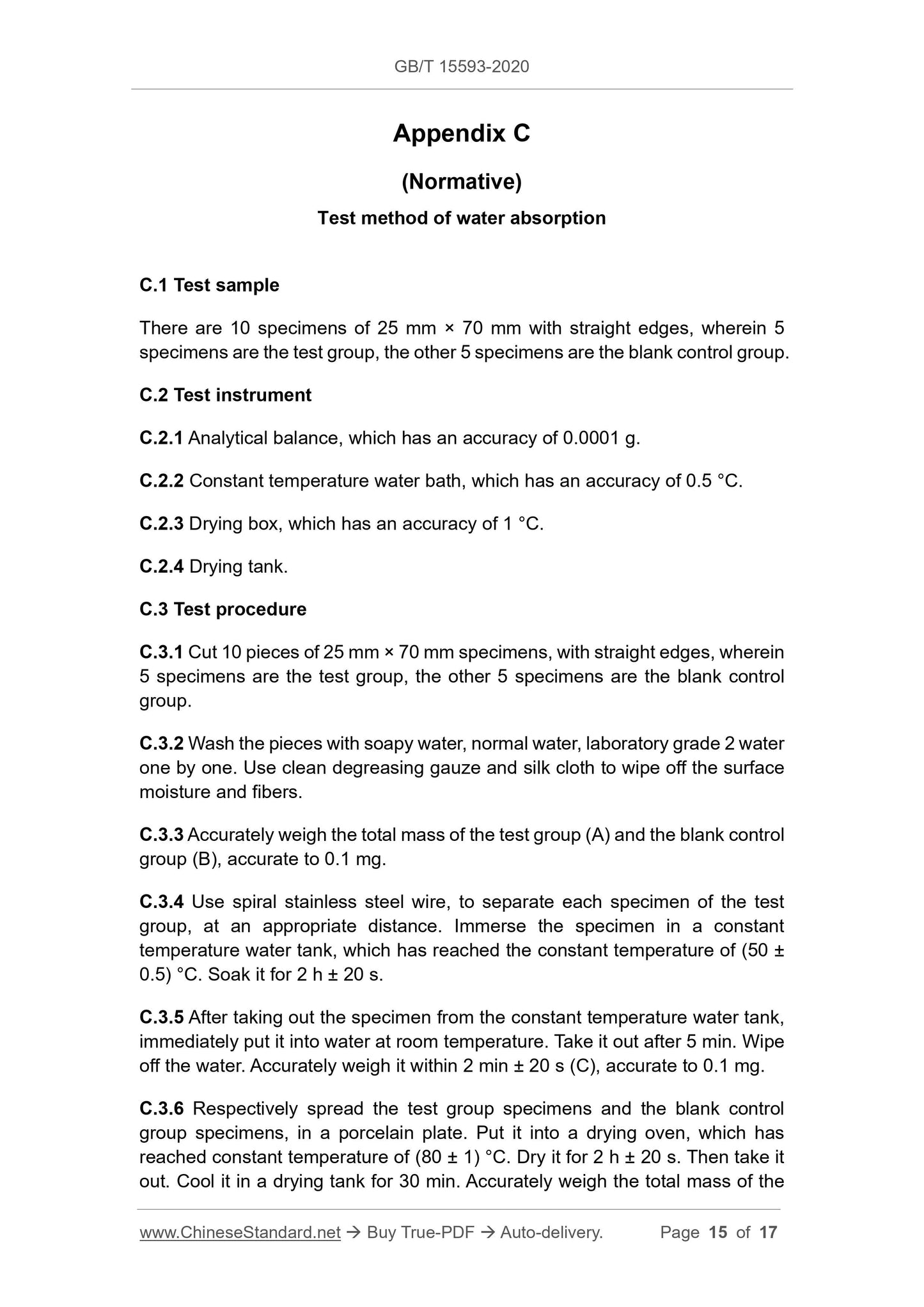1
/
of
7
www.ChineseStandard.us -- Field Test Asia Pte. Ltd.
GB/T 15593-2020 English PDF (GB/T15593-2020)
GB/T 15593-2020 English PDF (GB/T15593-2020)
Regular price
$230.00
Regular price
Sale price
$230.00
Unit price
/
per
Shipping calculated at checkout.
Couldn't load pickup availability
GB/T 15593-2020: Plasticized poly(vinyl chloride) compounds for transfusion (infusion) equipment
Delivery: 9 seconds. Download (and Email) true-PDF + Invoice.Get Quotation: Click GB/T 15593-2020 (Self-service in 1-minute)
Newer / historical versions: GB/T 15593-2020
Preview True-PDF
Scope
This standard specifies the requirements, test methods, markings, packaging,transportation, storage of plasticized poly(vinyl chloride) compounds for
transfusion (infusion) equipment.
This standard applies to the PVC plastics for disposable transfusion (infusion)
bags, transfusion (infusion) catheters, accessories, which are made through
blending and modifying the main material of polyvinyl chloride resin, by adding
other necessary additives such as bis(2-ethylhexyl) phthalate (DEHP)
plasticizer, epoxy soybean oil and/or epoxy linseed oil.
Basic Data
| Standard ID | GB/T 15593-2020 (GB/T15593-2020) |
| Description (Translated English) | Plasticized poly(vinyl chloride) compounds for transfusion (infusion) equipment |
| Sector / Industry | National Standard (Recommended) |
| Classification of Chinese Standard | G32 |
| Classification of International Standard | 83.080.20 |
| Word Count Estimation | 14,145 |
| Date of Issue | 2020-11-19 |
| Date of Implementation | 2021-10-01 |
| Older Standard (superseded by this standard) | GB/T 15593-1995 |
| Regulation (derived from) | National Standard Announcement No. 26 of 2020 |
| Issuing agency(ies) | State Administration for Market Regulation, China National Standardization Administration |
Share
